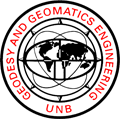University of New Brunswick news release number: B59
Contact: Sandra Howland, UNB Public Relations, (506) 458-7968
UNIVERSITY OF NEW BRUNSWICK EXPERTS
MAPPING OCEAN FLOOR
AT SITE OF SWISSAIR FLIGHT 111 CRASH
Ocean mapping experts from the University of New Brunswick in Fredericton have been called in to assist with investigations into the crash of Swissair Flight 111.
John Hughes Clarke, Larry Mayer and Edouard Kammerer are working aboard the Canadian Coast Guard ship MATTHEW to create detailed three-dimensional maps of the ocean floor. The expectation is that these high-resolution maps will reveal the larger pieces of debris from the downed airliner and provide a regional framework for all recovery operations.
"Using software developed at UNB, our researchers are analysing multibeam sonar data and preparing map representations of the results," explains David Wells of UNB's Ocean Mapping Group.
"These maps are 3-D computer images that you can actually 'fly' through, as though you were underwater moving across the ocean floor. You can see the distribution of materials - where there is sand and where there is mud - as well as man-made objects as small as five per cent of water depth."
The ocean mapping effort is part of the Canadian Coast Guard's 24-hour-a-day search and recovery operation. The MATTHEW, a hydrographic survey vessel, is serving as home base for a Canadian Hydrographic Service (CHS) launch equipped with a $1-million multibeam sonar system. Two CHS crews, working in six-hour shifts on the launch, are gathering information from the ocean floor. At the end of each shift, the data are delivered to the UNB researchers on the MATTHEW.
To keep up with the enormous amount of data being collected, members of UNB's Ocean Mapping Group - along with representatives of CHS, the Geological Survey of Canada and the Canadian Navy - are working around the clock. "Several times an hour, multibeam sonar generates as much data as there are characters in the Encyclopedia Britannica," explains Dr. Wells. "UNB's software - which was developed by John Hughes Clarke - is specifically tailored to process these data."
The interactive fly-through software, developed by the Ocean Mapping Group and Interactive Visualization Systems of Fredericton, is being used both on the vessel and for shore-based investigations.
At this time, the UNB researchers don't know how long their services will be required aboard the MATTHEW.
In addition to its data-processing software and 3-D visualization products, it is the Ocean Mapping Group's experience with the digital, high-resolution swath-mapping method of data collection that has earned it a worldwide reputation.
"Traditional survey methods require a boat to pass over an area twice: once to measure the depth of the water and a second time to get an acoustic picture of the sea floor," explains Dr. Mayer. "With modern swath-mapping systems, such as multibeam sonar, both measurements can be collected at once so a much larger area of the sea floor can be covered."
At the site of the crash of Swissair Flight 111, an area of more than 60 sq. km will be mapped.
An acoustic picture of the sea floor is created by measuring the sound energy bounced back from the bottom. Harder materials send back more energy than softer ones. "This gives us an idea of what's actually down there," says Dr. Mayer.
Larry Mayer holds UNB's chair in ocean mapping. The chair, which operates within the Ocean Mapping Group, was established in 1991 to expand research capabilities in the development of innovative methods to manage, process, depict and interpret ocean mapping data.
John Hughes Clarke is a senior research associate in UNB's Ocean Mapping Group in the department of geodesy and geomatics engineering. He holds a PhD in oceanography.
Edouard Kammerer, a UNB graduate student from Paris, France, is working on a PhD under the supervision of Dr. Hughes Clarke. He is conducting research on multibeam sonar.
UNB's Ocean Mapping Group was established in 1988 in response to a national need to develop advanced ocean mapping capabilities. The research of the group focuses on inventing new techniques and tools for the management, processing, visualization and interpretation of ocean mapping data.
Note to media: Dr. Hughes Clarke, Dr. Mayer and Mr. Kammerer will be available for interviews once their work aboard the MATTHEW is complete. In the interim, information on multibeam sonar systems and UNB's ocean mapping software is available from Dr. David Wells at (506) 453-4698.


